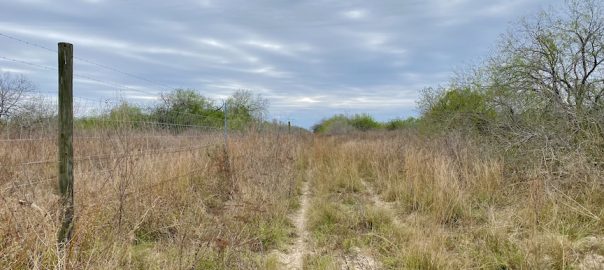When I was invited to join the Beyond Borders team this year, I anticipated it would be an eye-opening experience. Despite having heard countless stories from Dr. Krista Latham and former participants, I had never fully grasped the depth of their experiences. With that in mind, I set out with two main goals: (1) to understand the history of the Beyond Borders project, and (2) to gain insight into the work my students and colleagues carry out each year.
From the very beginning of this trip, it was impossible not to imagine myself in the position of the individuals we were there to search for. Navigating the harsh environment—pushing through thorny shrubs and cacti—was challenging enough, but I am privileged to do so without the desperation or danger that migrants face. I will never truly comprehend the strength it takes to undertake such an arduous journey or the circumstances that drive people to consider this much risk.
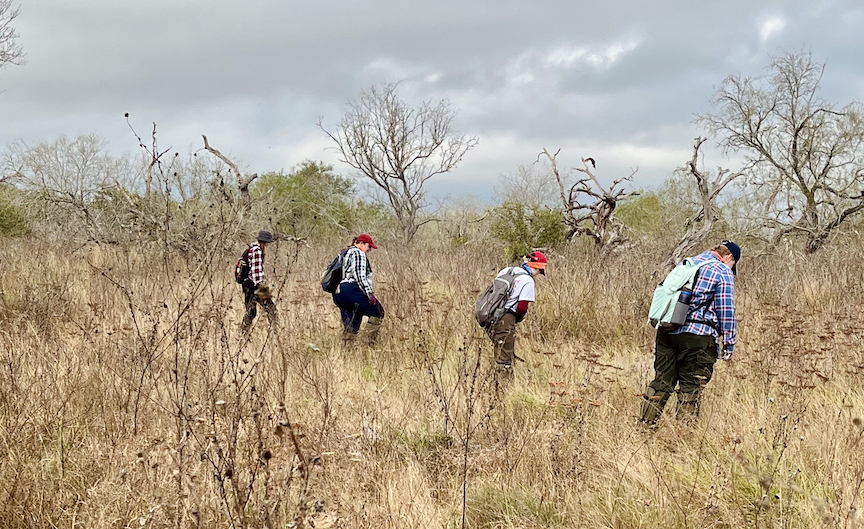
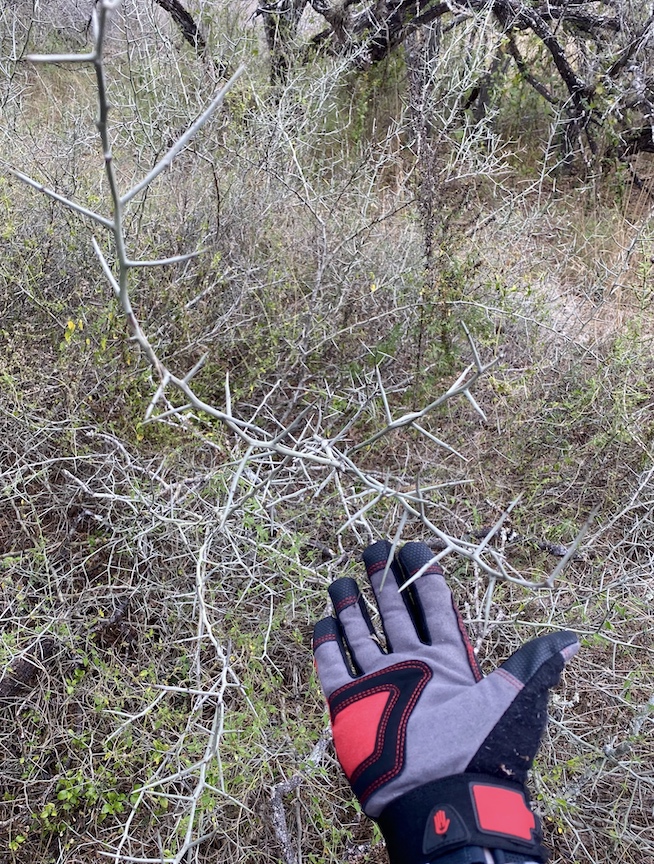
Throughout this trip, I became aware of realities I had never fully considered. For example, I learned that migrants typically travel at night, maneuvering through dense terrain filled with unpredictable vegetation, sinking sand, and wild animals such as large boars and coyotes. Travelers rest during the day, often seeking shelter under the low-hanging branches of thorny trees, leaving behind few materials nor any evidence of flashlights. The thought of moving through South Texas’ rough terrain without proper gear, light, or protection from wildlife is unimaginable to me.
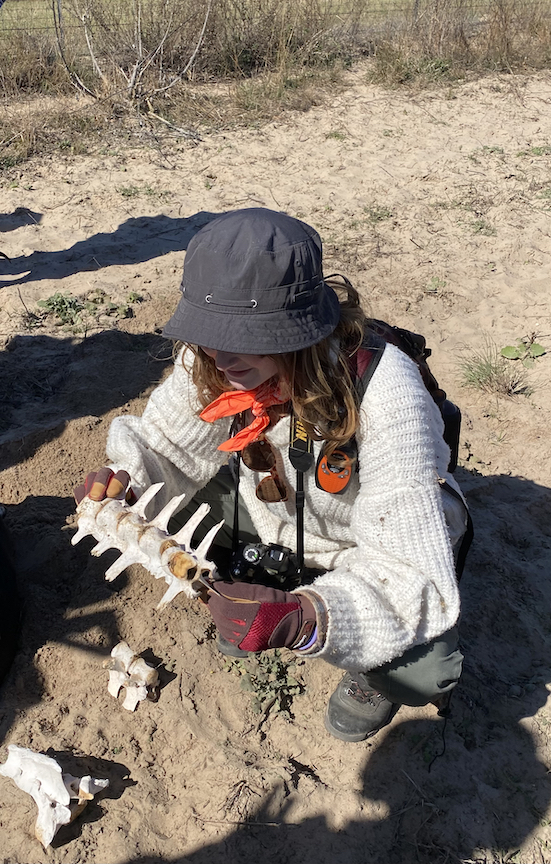
Some days yielded discoveries of numerous animal bones, which turned into impromptu teaching moments for the students to compare their knowledge of human and non-human skeletal remains. While this was engaging for a day, I soon realized that not everything needed to become a lesson, especially when it detracted from our primary goal of searching for missing persons and for signs of recent routes on which migrants might have been left behind.
One of the most rewarding aspects of this project was observing the graduate students adapt and support one another in the field. Experiential learning is a cornerstone of the Human Biology Master’s Program at the University of Indianapolis (UIndy), and this project exemplifies that. Beyond its humanitarian purpose, it fosters trust and strengthens relationships among UIndy and team members Deputy Don White and Paramedic Ray Gregory of Remote Wildlands Search and Recovery. Despite it being my first time in the field with this group, I was struck by how seamlessly we worked together. The students’ thoughtful daily reflections—both written and spoken—were a testament to their growth and the power of shared experiences.
I was especially struck by each team member’s strong qualities:
- Chastidy’s openness: Though this was her second time on the Beyond Borders team, we shared several new experiences and her ability to verbalize her thoughts so poignantly was touching.
- Frankey’s positivity: Even after long days crawling through thorny brush, she maintained a joyful demeanor, which uplifted the group’s morale.
- Lilly’s resilience: After a minor mishap with camera settings during her turn as photographer, she embraced a second chance and captured the day beautifully.
- Makenna’s responsiveness: As the line leader, she rose to the challenge, quickly implementing constructive feedback to keep us better aligned and doing an excellent job.
- Krista’s leadership: Her ability to foster a strong team dynamic through daily exercises of reflection—what each member learned, excelled at, and could improve upon—was inspiring.
- Don’s dedication: His commitment to helping others and in-depth knowledge of the key areas most in need of searching was invaluable. This was possible because of the relationships he built with ranch owners providing us with essential access to conduct searches.
- Ray’s vigilance: As a paramedic, he took on the critical role of safeguarding our team’s well-being, ensuring we stayed hydrated and were safe as we navigated through remote and challenging terrain.
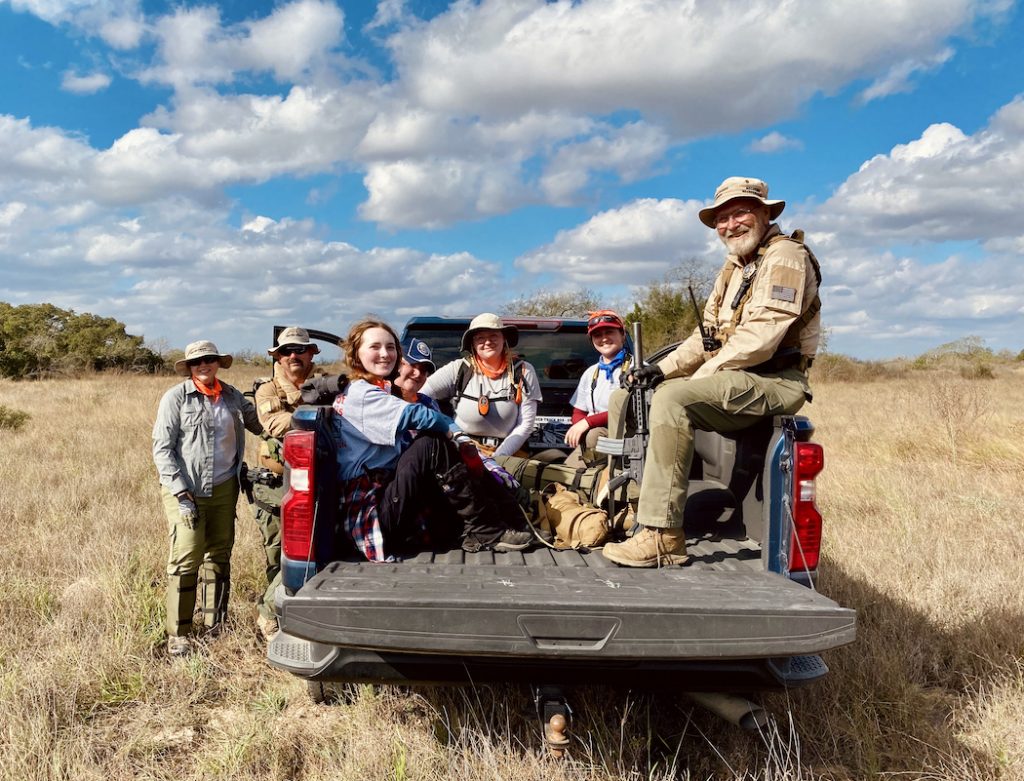
The week was not solely about fieldwork. On days when we left a ranch by mid-afternoon, we engaged in activities that deepened our understanding of the community and the project’s history. These included a guided tour of the Falfurrias cemetery where the project began, a visit to the shrine of Don Pedrito (a renowned faith healer), and a trip to the U.S.–Mexico border.
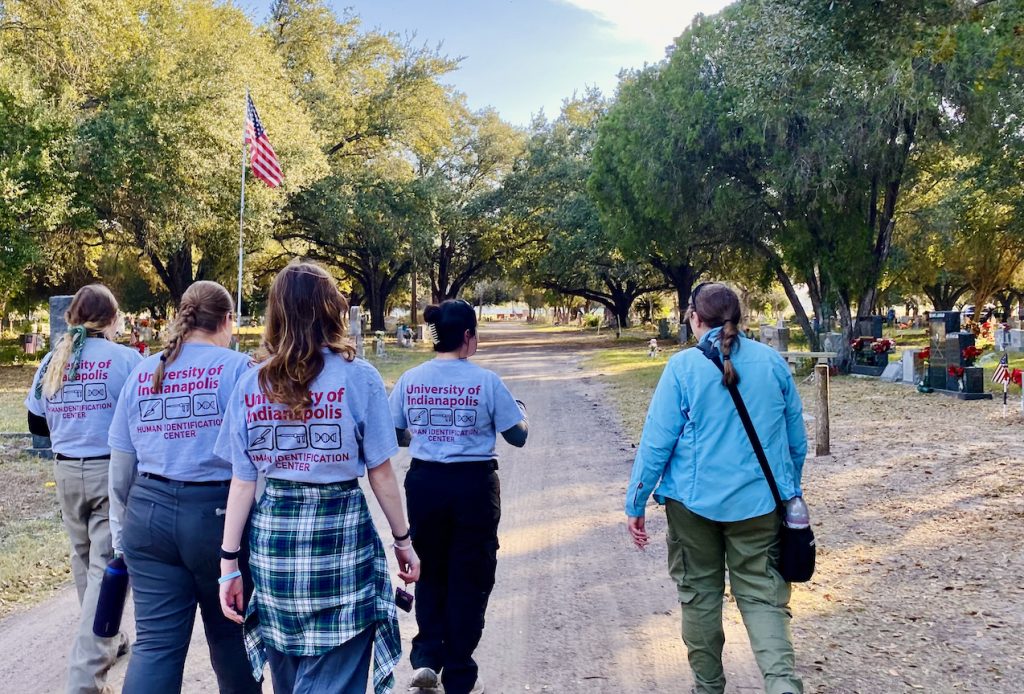
At the border, we encountered Border Patrol agents stationed at a large, gated fence. While speaking with an agent who welcomed our questions, we witnessed a patrol truck return to the U.S. carrying two individuals seeking asylum. This moment was profoundly impactful, knowing that such opportunities may soon become unavailable under the incoming administration. It left me wondering how many more people will attempt the long and dangerous trek across the South Texas plains willing to risk everything—including their lives—to seek something different and potentially better.
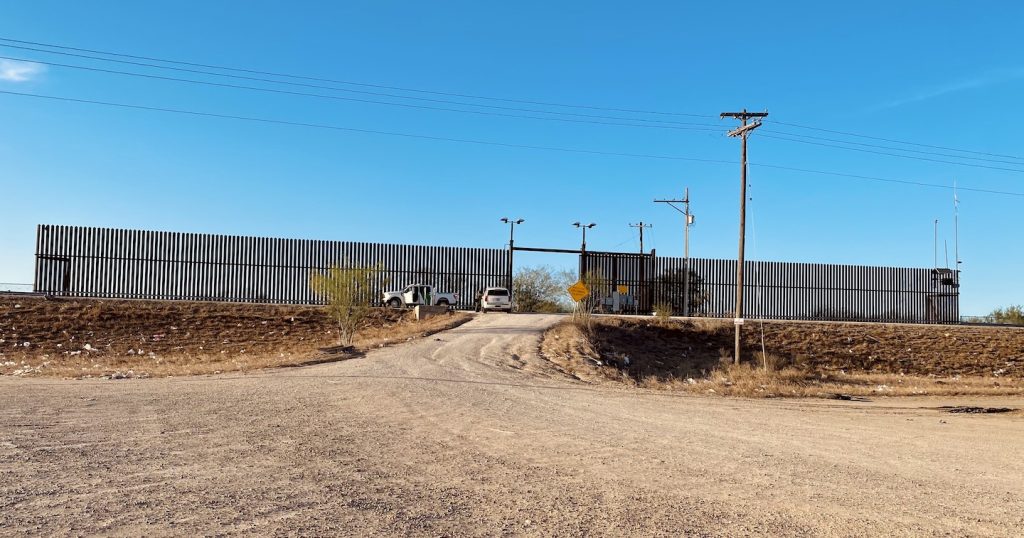
There is no simple solution to this humanitarian crisis, but after this experience, I feel better equipped to speak about the Beyond Borders project with better understanding and compassion. I am deeply grateful to have been part of the 2025 team.
~AE
